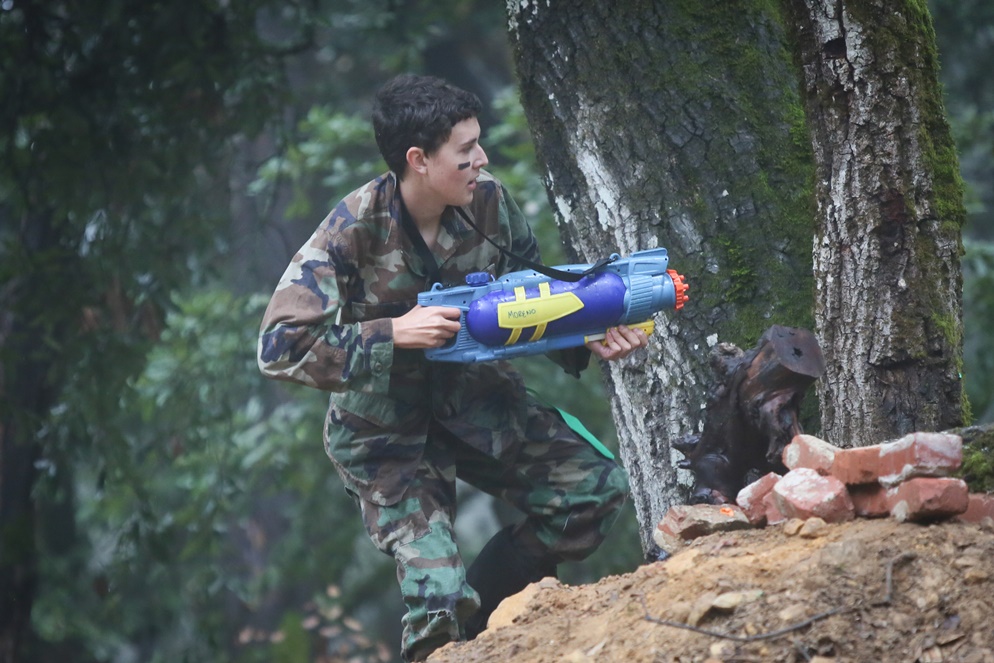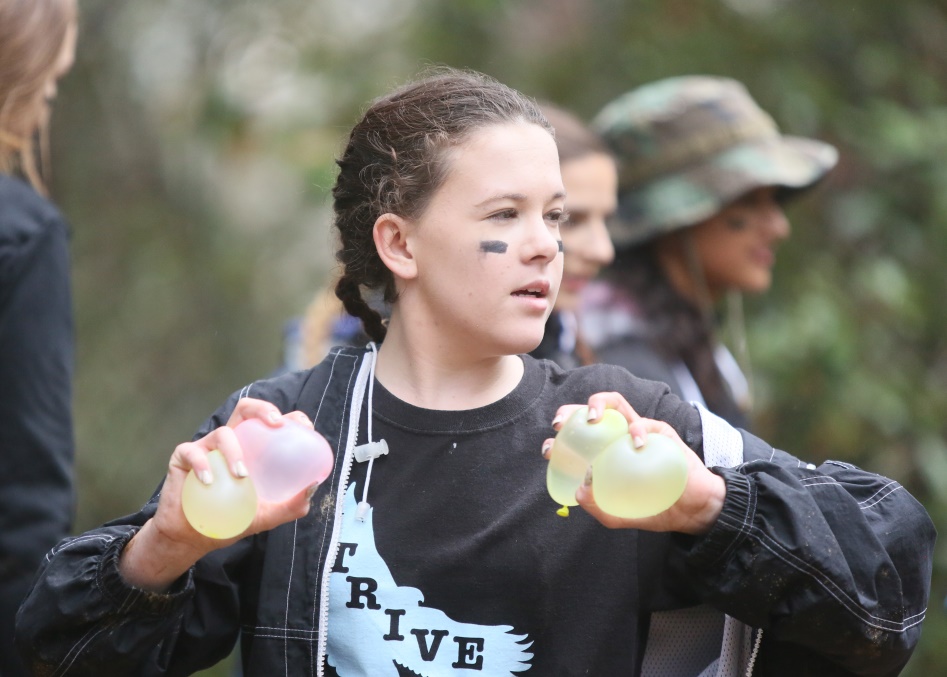 It is a gray, wet afternoon as rain drips through the redwoods on the Mount Madonna School (MMS) campus. A group of tenth and eleventh grade students can be spotted bustling outside of their classroom, full of nerves and anticipation. Most are adorned in camouflage with black smudges of paint under their eyes. To the casual observer it might appear that these students are preparing for a theatrical production. In reality, this is the beginning of a reenactment of trench warfare and is the culmination of a unit examining WWI in teacher Amy Neff’s social studies course.
It is a gray, wet afternoon as rain drips through the redwoods on the Mount Madonna School (MMS) campus. A group of tenth and eleventh grade students can be spotted bustling outside of their classroom, full of nerves and anticipation. Most are adorned in camouflage with black smudges of paint under their eyes. To the casual observer it might appear that these students are preparing for a theatrical production. In reality, this is the beginning of a reenactment of trench warfare and is the culmination of a unit examining WWI in teacher Amy Neff’s social studies course. After the excitement slowly dissipates to a focus on the task at hand, Neff reviews the rules and logistics for the activity and supplies are assessed. For the past few weeks eleventh grade students have been examining the role of the United States and general conditions during WWI. According to eleventh graders Saniya Lakka and Sophia Saavedra, students have kept journals, read first-hand accounts from American soldiers and learned about the causes of WWI. However, it is today’s activity that students have been waiting for as they will simulate trench fighting on the school campus. The tenth grade students will represent Germany after having gained introductory knowledge of this time period, which enriches their studies of the Revolutionary War, while eleventh grade will represent the United States.
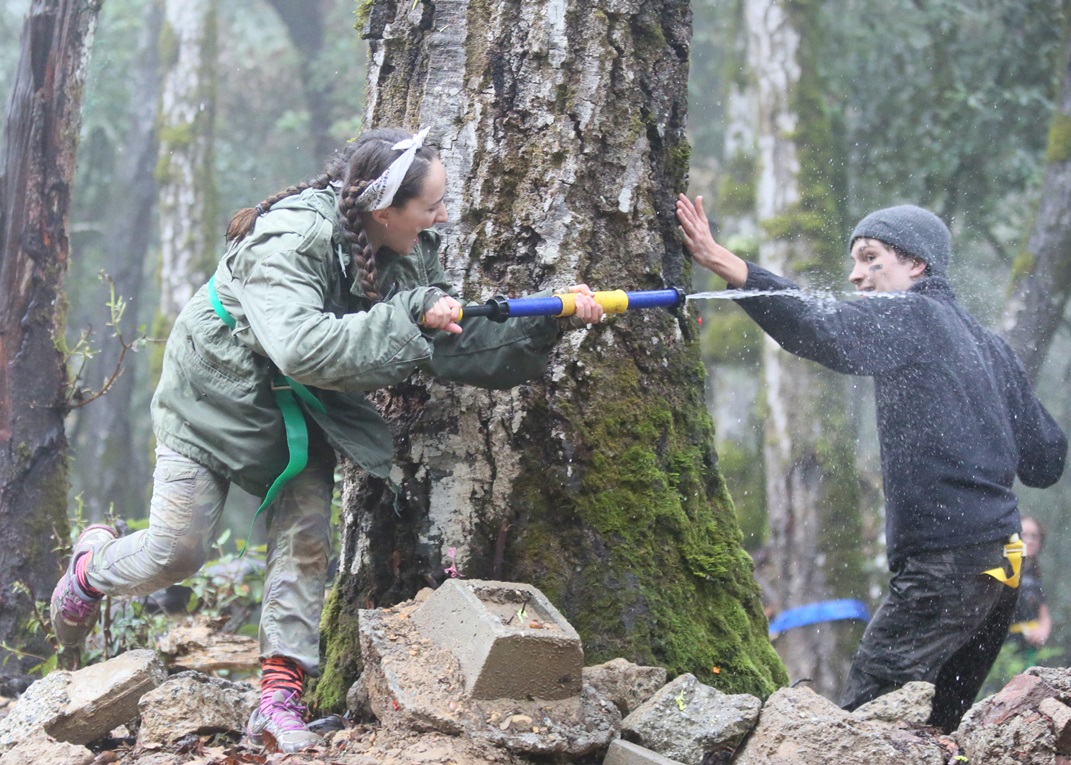 Although this lesson has only been part of the MMS high school social studies since 2012, it has become something of school legend. Younger students eagerly await the time when they will participate as sophomores and juniors. Some have even been allowed to witness the event in previous years as freshman. It is difficult to imagine a typical history lesson garnering this much enthusiasm. Tenth grader Jacob Castillo sums it up by saying, ‘it makes you feel like you’re actually there.’
Although this lesson has only been part of the MMS high school social studies since 2012, it has become something of school legend. Younger students eagerly await the time when they will participate as sophomores and juniors. Some have even been allowed to witness the event in previous years as freshman. It is difficult to imagine a typical history lesson garnering this much enthusiasm. Tenth grader Jacob Castillo sums it up by saying, ‘it makes you feel like you’re actually there.’ This is Neff’s first year adopting the lesson from former MMS teacher Matt Meachen. Neff said she was hesitant to take this project on.
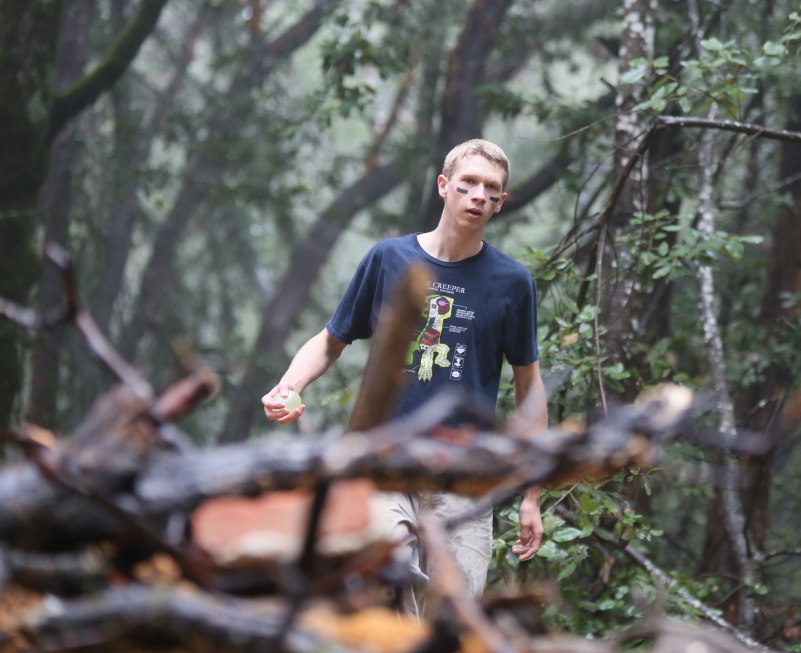 ‘I had concerns about how much work it would be, whether there would be injuries, students missing classes.’ Ultimately, student interest trumped those initial concerns. ‘They were really excited about the event continuing since the juniors participated last year as sophomores and the current sophomores heard about it from previous classes,’ said Neff.
‘I had concerns about how much work it would be, whether there would be injuries, students missing classes.’ Ultimately, student interest trumped those initial concerns. ‘They were really excited about the event continuing since the juniors participated last year as sophomores and the current sophomores heard about it from previous classes,’ said Neff.A group of approximately thirty students take a five minute walk into the nearby redwoods where trenches have already been made in previous years by volunteers. One of the many benefits to having vast outdoor acreage is the ability to create active educational experiences such as this. During the short walk two eleventh grade girls sing the ‘Star Spangled Banner’ with full gusto. A level of pride seems to move through all the eleventh grade students. They have participated before and have a level of sophistication surrounding this activity that can only be garnered from experience.
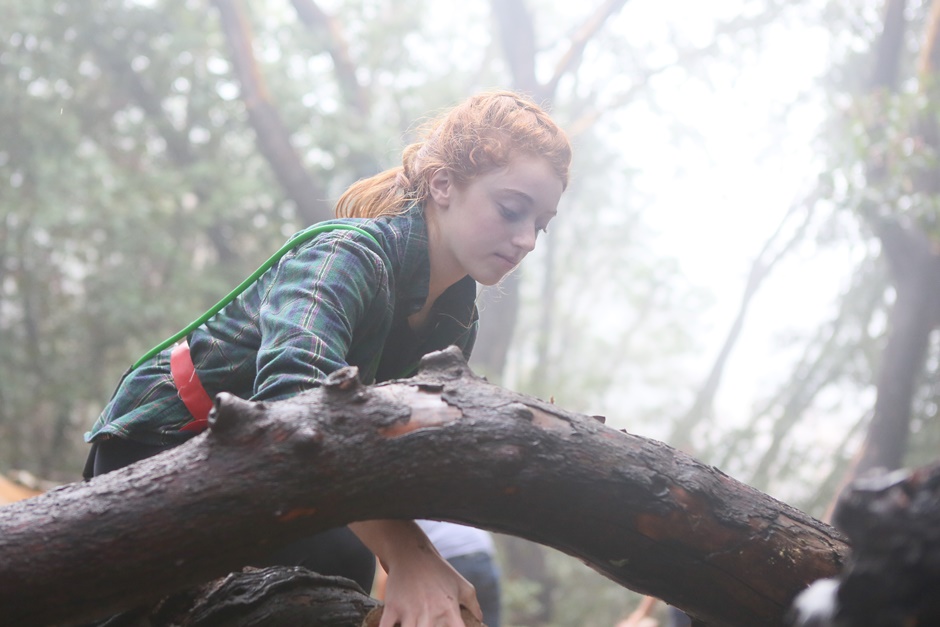 Once students assemble at the site, Neff gives the troops fifteen minutes to prepare their respective areas. Students immediately begin to hustle, moving debris of large branches and leaves along with broken concrete in order to create the best defense possible. Both sides begin discussing strategy. Students distribute ‘ammunition’ of water balloons and squirt guns and then they file to their respective sides as Neff calls time. With eleventh graders’ loud chants of ‘U-S-A! U-S-A!’ the first round begins.
Once students assemble at the site, Neff gives the troops fifteen minutes to prepare their respective areas. Students immediately begin to hustle, moving debris of large branches and leaves along with broken concrete in order to create the best defense possible. Both sides begin discussing strategy. Students distribute ‘ammunition’ of water balloons and squirt guns and then they file to their respective sides as Neff calls time. With eleventh graders’ loud chants of ‘U-S-A! U-S-A!’ the first round begins. Students do their best to respect the rules 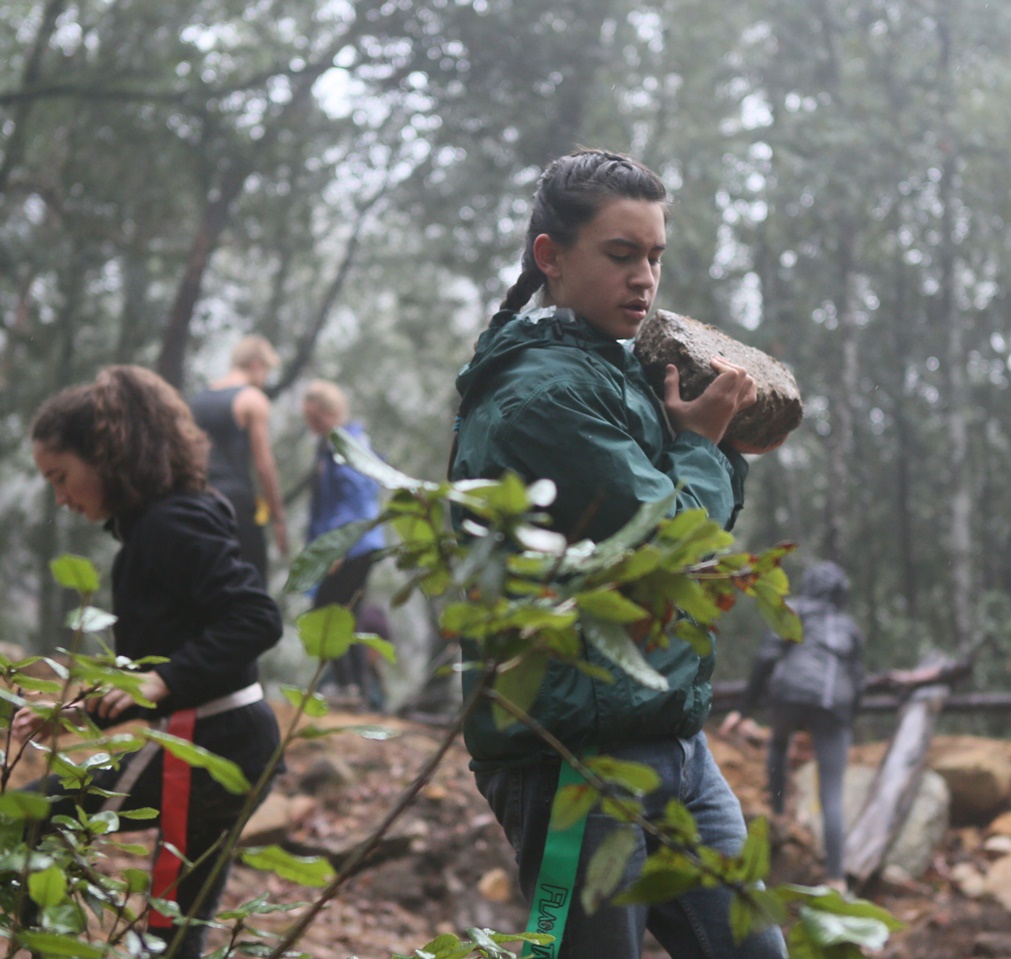 Neff has outlined. If students are hit by a water balloon they are immediately out. If a target comes within three feet of a soldier they are also out but can be saved by a medic, a role chosen by fellow classmates. Each student wears a flag football belt with two sashes that represent the soldier’s two lives and can be taken by the opposing side. Over the next twenty minutes of this first round students run through the trees dodging hurling water balloons and sprays of water. USA easily wins and new strategies are created for the next round.
Neff has outlined. If students are hit by a water balloon they are immediately out. If a target comes within three feet of a soldier they are also out but can be saved by a medic, a role chosen by fellow classmates. Each student wears a flag football belt with two sashes that represent the soldier’s two lives and can be taken by the opposing side. Over the next twenty minutes of this first round students run through the trees dodging hurling water balloons and sprays of water. USA easily wins and new strategies are created for the next round.
 Neff has outlined. If students are hit by a water balloon they are immediately out. If a target comes within three feet of a soldier they are also out but can be saved by a medic, a role chosen by fellow classmates. Each student wears a flag football belt with two sashes that represent the soldier’s two lives and can be taken by the opposing side. Over the next twenty minutes of this first round students run through the trees dodging hurling water balloons and sprays of water. USA easily wins and new strategies are created for the next round.
Neff has outlined. If students are hit by a water balloon they are immediately out. If a target comes within three feet of a soldier they are also out but can be saved by a medic, a role chosen by fellow classmates. Each student wears a flag football belt with two sashes that represent the soldier’s two lives and can be taken by the opposing side. Over the next twenty minutes of this first round students run through the trees dodging hurling water balloons and sprays of water. USA easily wins and new strategies are created for the next round. Germany is undeterred as they begin to formulate a new game plan for the next round. Time is called again and chaos takes over. Neff realizes that keeping track of points will be too difficult and she concedes to tallying the number of fallen soldiers for each side. These casualties begin to form in the middle of the battlefield and by the time this round is over only a few students remain standing on either side. While these fallen soldiers are waiting, they tell Neff stories of the event in preceding years. It is obvious that this particular school event, among the 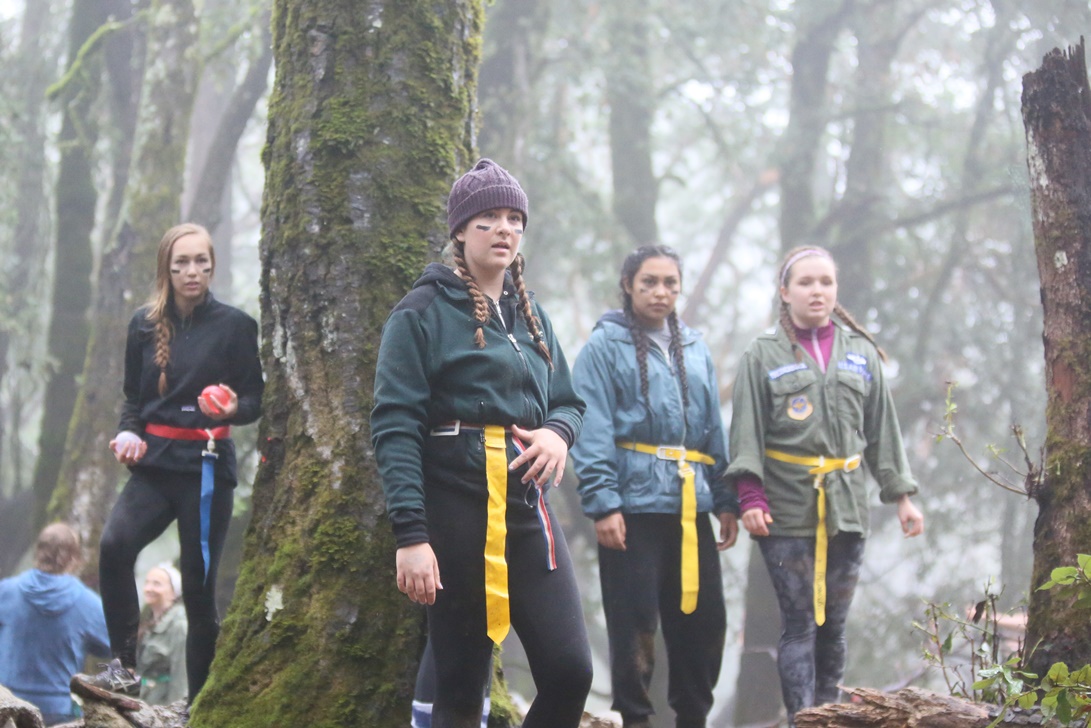 many MMS has adopted into its event repertoire, brings up vivid memories in the minds of its participants. Despite its adversarial nature, students are supportive and all walk away with a positive feeling afterward. There were even cheers and congratulatory sentiments when Germany won a round. This is mostly likely due to Neff’s emphasis on keeping the atmosphere convivial. She continually reminds students to stay friendly and be positive.
many MMS has adopted into its event repertoire, brings up vivid memories in the minds of its participants. Despite its adversarial nature, students are supportive and all walk away with a positive feeling afterward. There were even cheers and congratulatory sentiments when Germany won a round. This is mostly likely due to Neff’s emphasis on keeping the atmosphere convivial. She continually reminds students to stay friendly and be positive.
 many MMS has adopted into its event repertoire, brings up vivid memories in the minds of its participants. Despite its adversarial nature, students are supportive and all walk away with a positive feeling afterward. There were even cheers and congratulatory sentiments when Germany won a round. This is mostly likely due to Neff’s emphasis on keeping the atmosphere convivial. She continually reminds students to stay friendly and be positive.
many MMS has adopted into its event repertoire, brings up vivid memories in the minds of its participants. Despite its adversarial nature, students are supportive and all walk away with a positive feeling afterward. There were even cheers and congratulatory sentiments when Germany won a round. This is mostly likely due to Neff’s emphasis on keeping the atmosphere convivial. She continually reminds students to stay friendly and be positive. With the safety risks and logistical considerations of this reenactment it seems easy enough to scratch it in place of text book readings and trusty lectures. However students said they would support their teacher in order to keep it going this year.
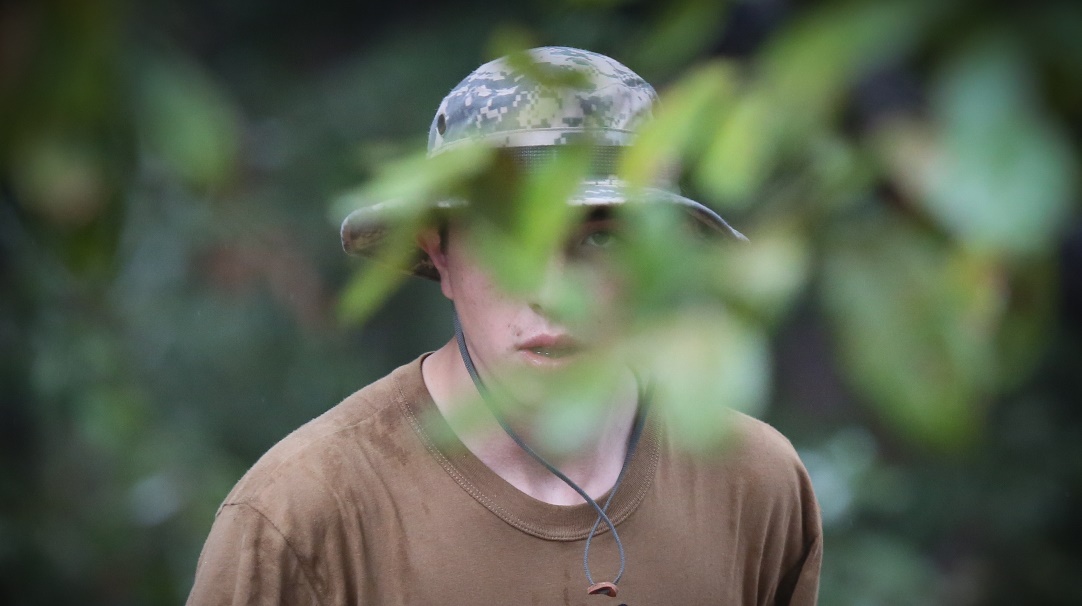 ‘They promised to help me get things ready and be active, positive participants,’ says Neff. This level of support and commitment paid off. Neff reports that the feedback among the students was good and they were even glad for the ‘rainy weather resulting in mud’ that made for a more realistic simulation. Students looked out for each other and were exposed to a lesson that they will most likely tell future students about, one of the many experiences that makes MMS so unique.
‘They promised to help me get things ready and be active, positive participants,’ says Neff. This level of support and commitment paid off. Neff reports that the feedback among the students was good and they were even glad for the ‘rainy weather resulting in mud’ that made for a more realistic simulation. Students looked out for each other and were exposed to a lesson that they will most likely tell future students about, one of the many experiences that makes MMS so unique.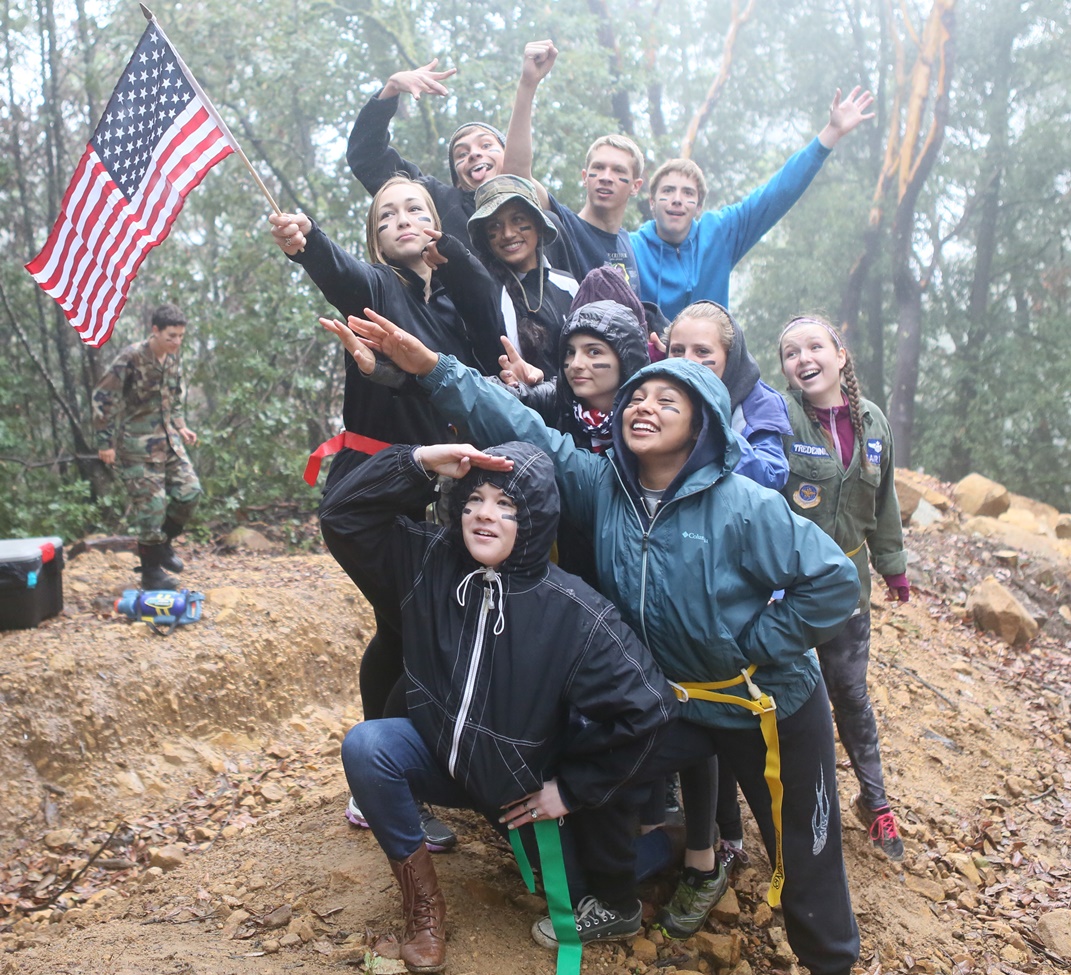
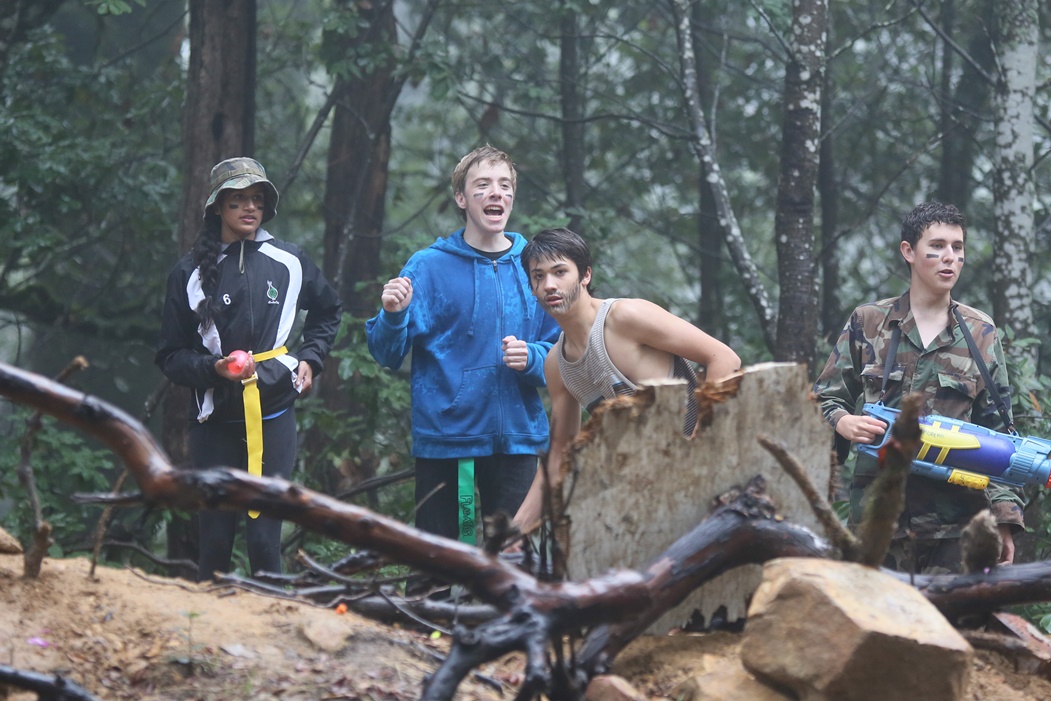
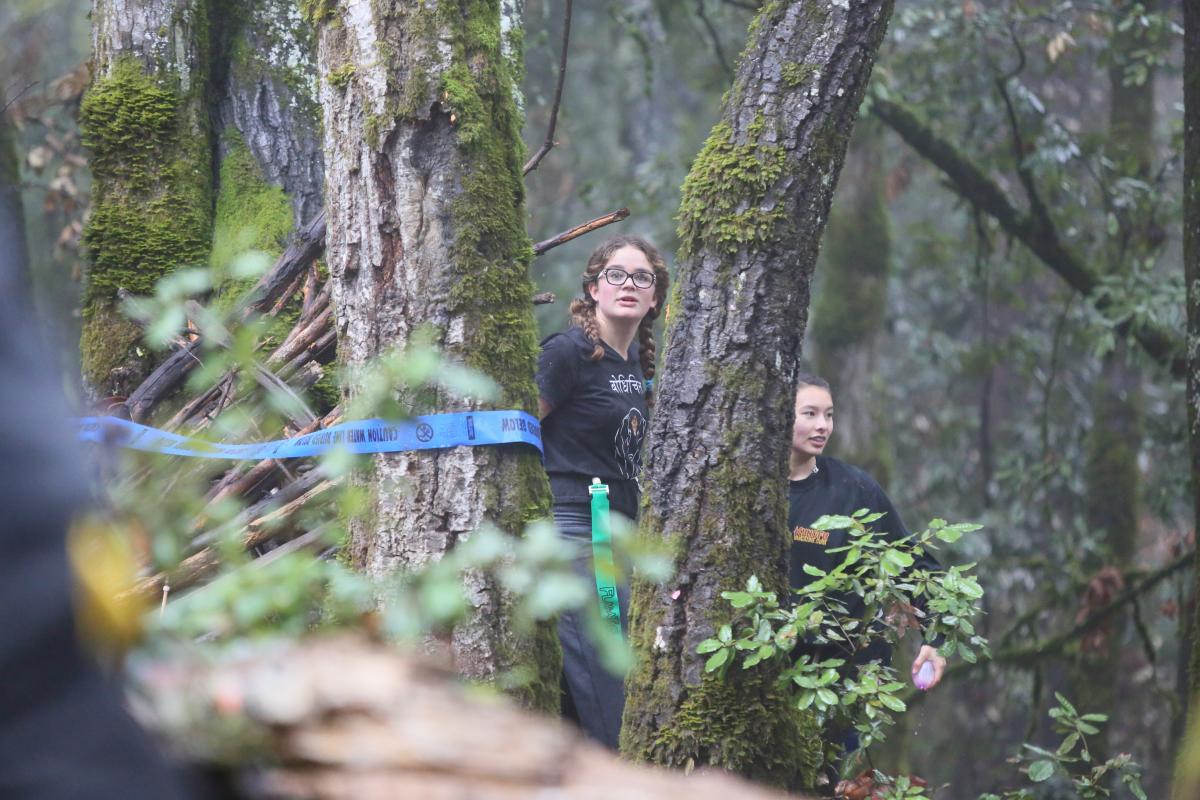

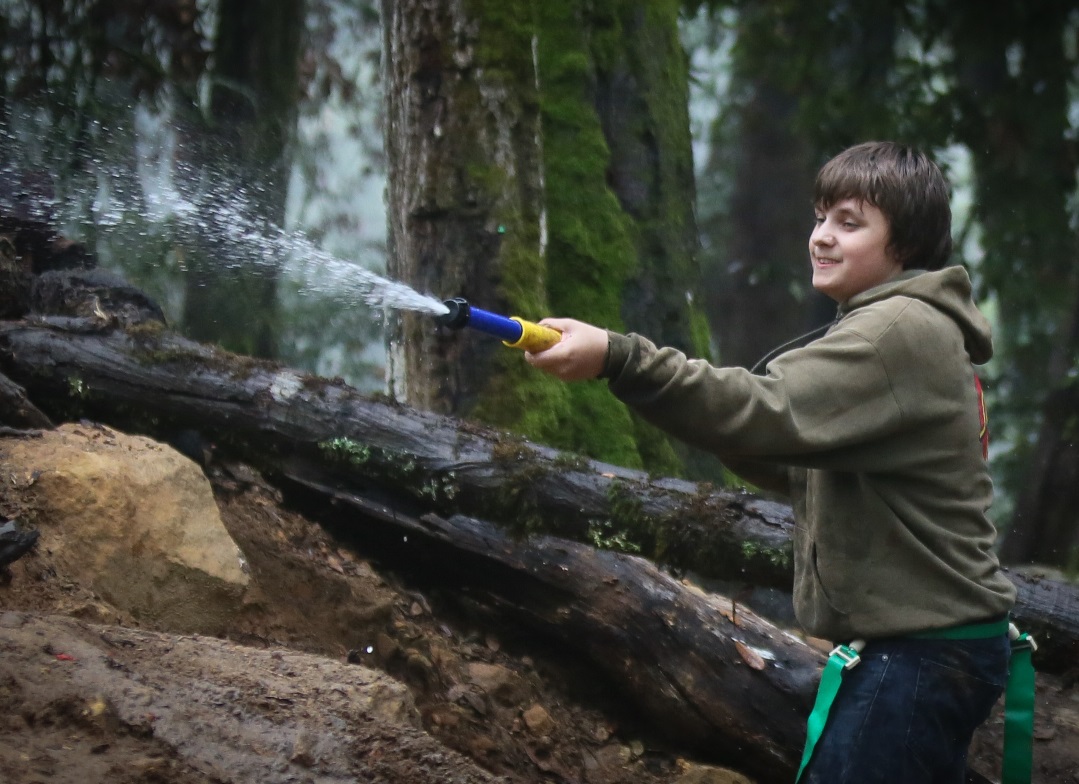
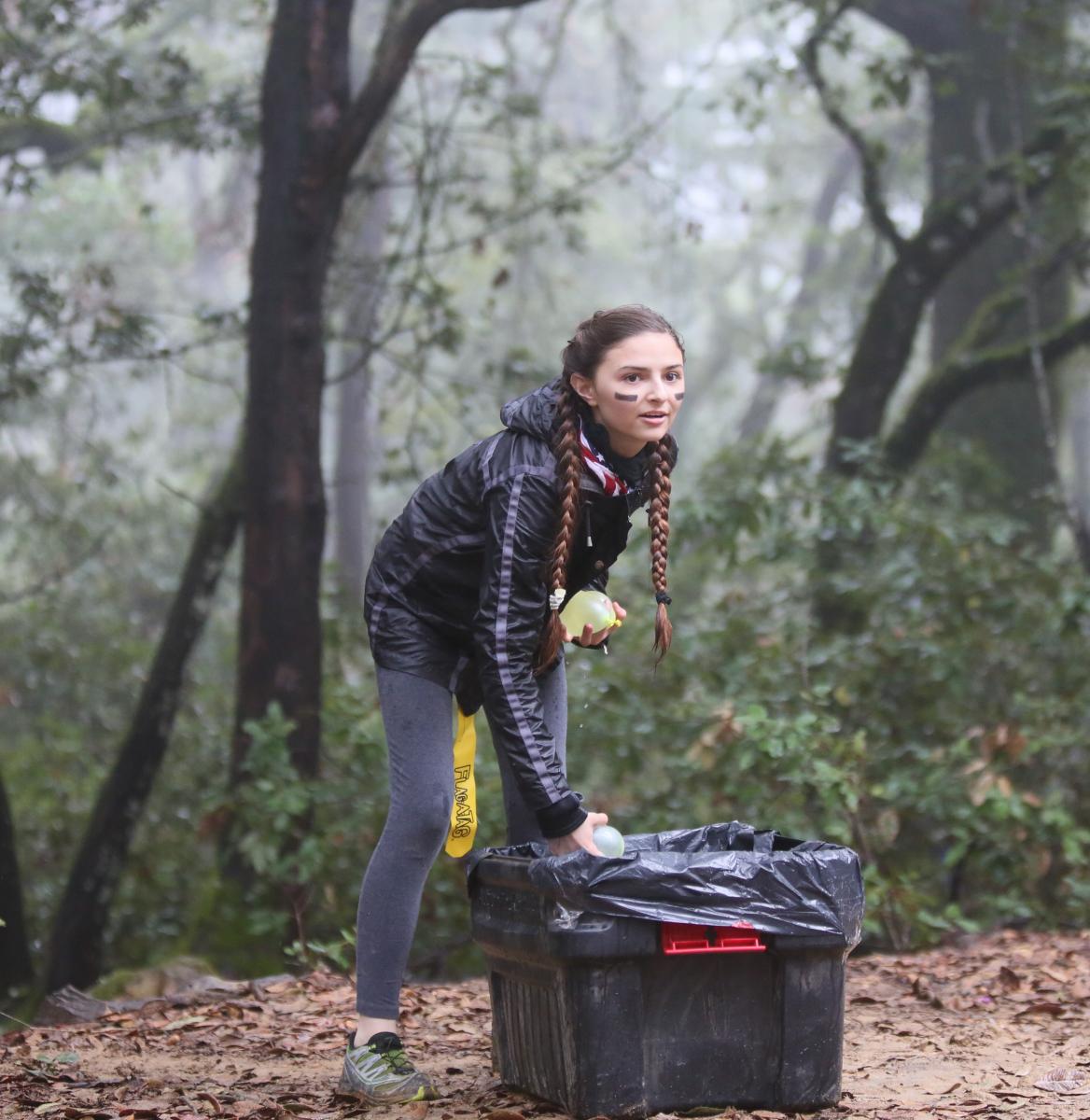
####
Story by Prema Gammons
P hotos by Maureen Pramanik
P hotos by Maureen Pramanik
Contact: Leigh Ann Clifton, Marketing & Communications,
Nestled among the redwoods on 355 mountaintop acres, Mount Madonna is a safe and nurturing college-preparatory school that supports students in becoming caring, self-aware and articulate critical thinkers, who are prepared to meet challenges with perseverance, creativity and integrity. The CAIS and WASC accredited program emphasizes academic excellence, creative self-expression and positive character development. Located on Summit Road between Gilroy and Watsonville.